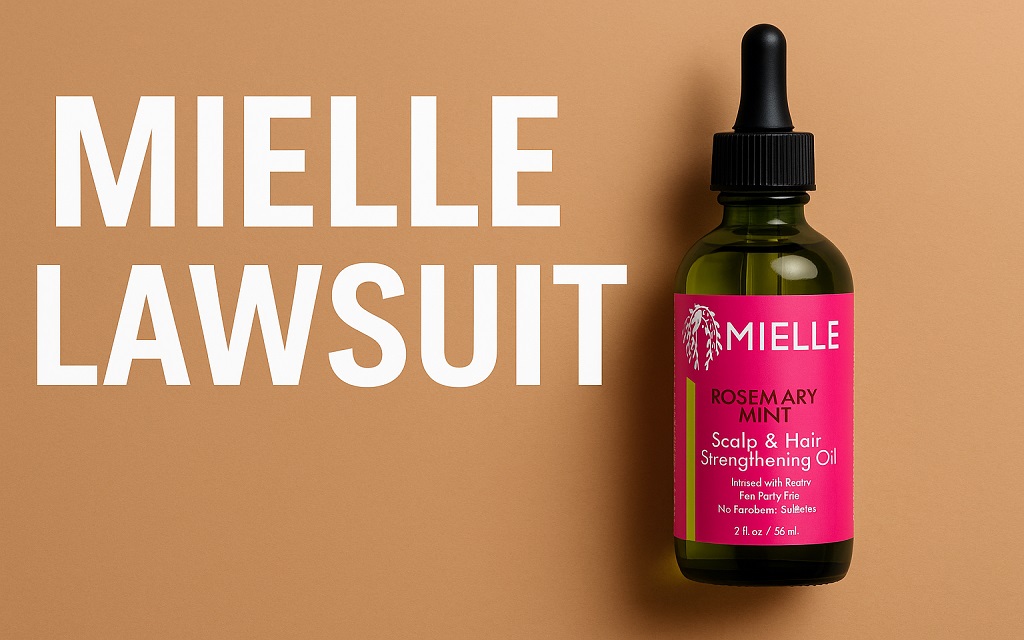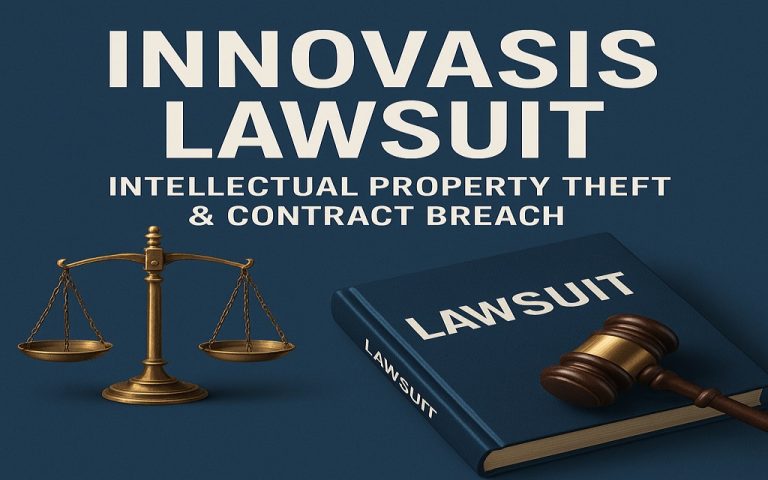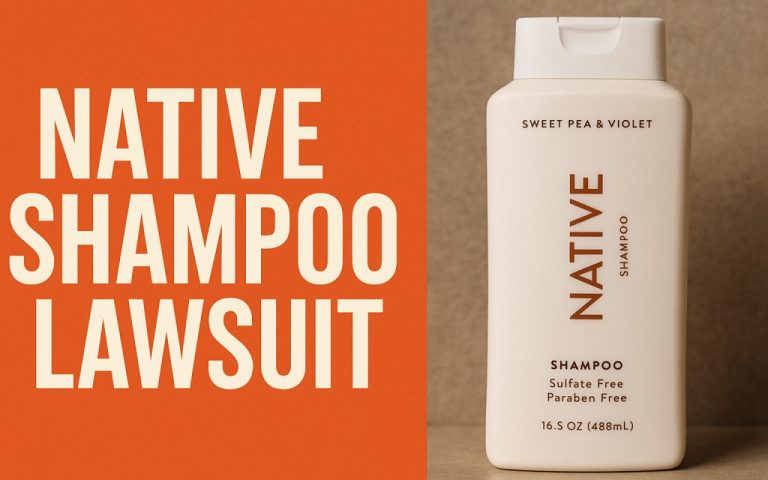Latest update — October 31, 2025
In Williams et al. v. Mielle Organics LLC, et al. (N.D. Ill., No. 1:24-cv-12763), the court granted Defendants’ motion to dismiss without prejudice and gave Plaintiffs two weeks to amend the complaint. This case followed Gomes v. Mielle (N.D. Ill., No. 1:24-cv-12019), which the plaintiff voluntarily dismissed on December 11, 2024. A separate California case, Allen v. Mielle Organics, LLC (C.D. Cal., No. 8:25-cv-00342), filed February 21, 2025, focuses on “natural” / “Made in USA” labeling and remains pending as of March 21, 2025 (waiver of service filed).
The Mielle Lawsuit is gaining national attention as more consumers question the safety of Mielle Rosemary Mint Hair Oil. The Mielle Lawsuit, filed in federal court, alleges that the popular product caused hair loss and scalp irritation, despite being marketed as safe and strengthening.
This class action targets both Mielle Organics and its parent company, Procter & Gamble, for allegedly failing to warn users or test the product appropriately. If you’ve used this oil, the Mielle Lawsuit could directly affect you. In this guide, we’ll break down everything you need to know about the Mielle Lawsuit—from legal claims to potential refunds and who qualifies to join the class action.
What Is the Mielle Lawsuit?
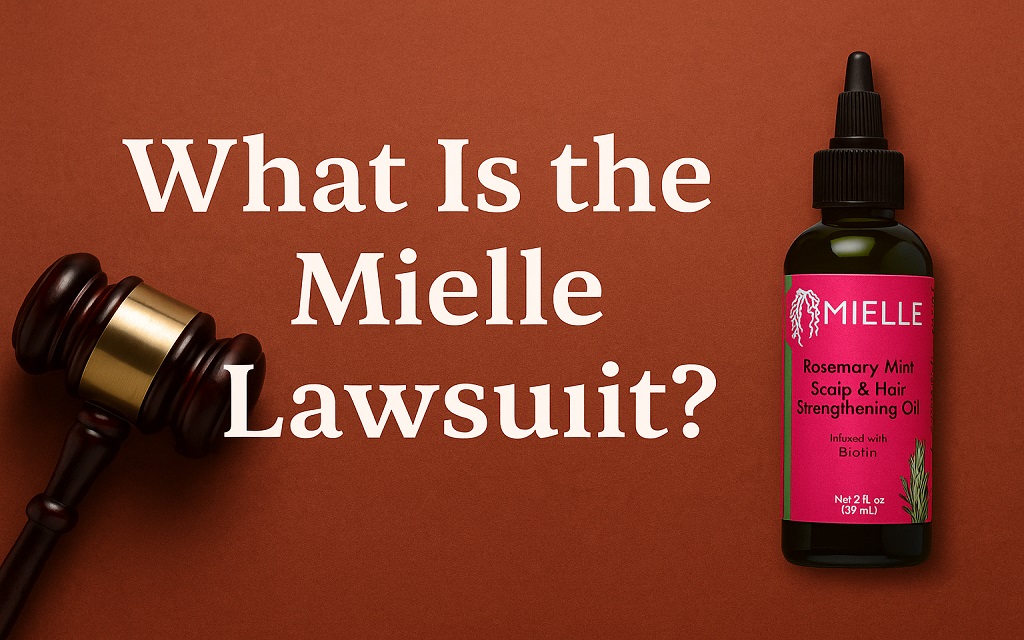
Procter & Gamble (P&G), the parent company of Mielle Organics, has been sued in a class action lawsuit. In November 2024, Gomes v. Mielle Organics, LLC and The Procter & Gamble Company was filed in the Northern District of Illinois, U.S. District Court. According to the lawsuit, consumers of Mielle’s best-selling product, Rosemary Mint Scalp & Hair Strengthening Oil, experienced hair loss.
Lead plaintiff Georgina Gomes, a Massachusetts resident, says she bought the oil based on promises that it would promote growth and strengthen hair. Instead, she alleges the product caused significant thinning and breakage. The complaint claims the oil was advertised as safe and effective but failed to disclose known risks.
Black people previously controlled the natural hair care business Mielle Organics, which P&G acquired in 2023. Both P&G and Mielle allegedly persisted in marketing and selling the product without carrying out sufficient testing or providing risk warnings, according to the complaint.
A nationwide class of buyers, along with a multi-state subclass that includes customers in CA, FL, IL, MA, MI, MN, MO, NJ, NY, and WA, is the target of the action.
Why Did the Plaintiff Sue?
The core of the lawsuit is omission, not defect. The complaint alleges that Mielle and P&G failed to do enough testing or disclose any adverse effects while marketing the rosemary mint oil as safe. The lawsuit contends that customers would not have bought the product if they were aware of the hazards.
The Complaint’s Allegations
- According to Mielle, the oil “strengthens” hair strands, “nourishes the scalp,” and “promotes healthy hair.”
- There were no cautions on the label regarding potential thinning, hair loss, or irritation of the scalp.
- The product was offered for sale both online and at big-box retailers like CVS, Walmart, and Target.
- Users allegedly suffered damage despite using the oil as directed
The complaint argues that these acts and omissions violate multiple state consumer protection laws. Gomes says she trusted the “clean beauty” branding and relied on label statements when choosing the product.
No recall has been issued. Mielle and P&G have not responded publicly to the allegations as of the time of filing.
Which Product Is Named in the Mielle Lawsuit?
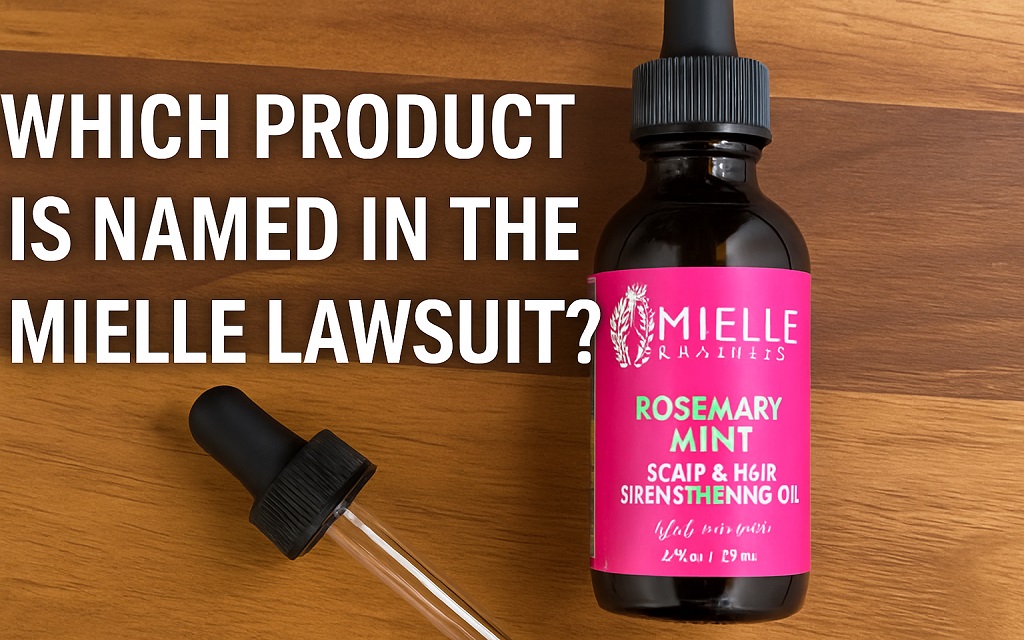
The lawsuit focuses on Mielle Organics Rosemary Mint Scalp & Hair Strengthening Oil, a flagship product in the brand’s lineup.
This hair oil ranks among Mielle’s top sellers. It gained widespread attention after receiving endorsements from celebrities and garnering viral social media posts. Users praised its lightweight texture and blend of natural ingredients—especially biotin, peppermint oil, and rosemary extract.
The product became especially popular in the natural hair care community, known for embracing curly and textured hair. Mielle promoted it as a safe, non-toxic oil designed to nourish the scalp, strengthen strands, and reduce breakage.
But What’s the Issue?
The lawsuit claims that this same product caused:
- Hair loss
- Bald spots
- Excessive shedding
- Scalp inflammation
- Hair thinning at the roots
Gomes and others say they used the product correctly but still experienced serious issues. The suit does not allege that every bottle is defective. Instead, it claims that failure to warn and lack of testing make the product unsafe for general use.
The complaint suggests that the formula may interact negatively with certain scalp conditions or hair types—but this was never disclosed. That failure, according to the lawsuit, forms the basis for consumer harm.
Who Is Included in the Class?
The lawsuit seeks class action certification under federal law. The goal is to include all consumers who purchased the Mielle Rosemary Mint oil during the proposed class period.
Nationwide Class
- All U.S. residents who bought the oil in any state
- No cutoff date has been specified yet
Multi-State Subclass
Consumers from the following states are included in a proposed subclass:
- California
- Florida
- Illinois
- Massachusetts
- Michigan
- Minnesota
- Missouri
- New Jersey
- New York
- Washington
These states qualify for unified legal treatment because their consumer fraud laws are comparable.
What Is Meant by Class Certification?
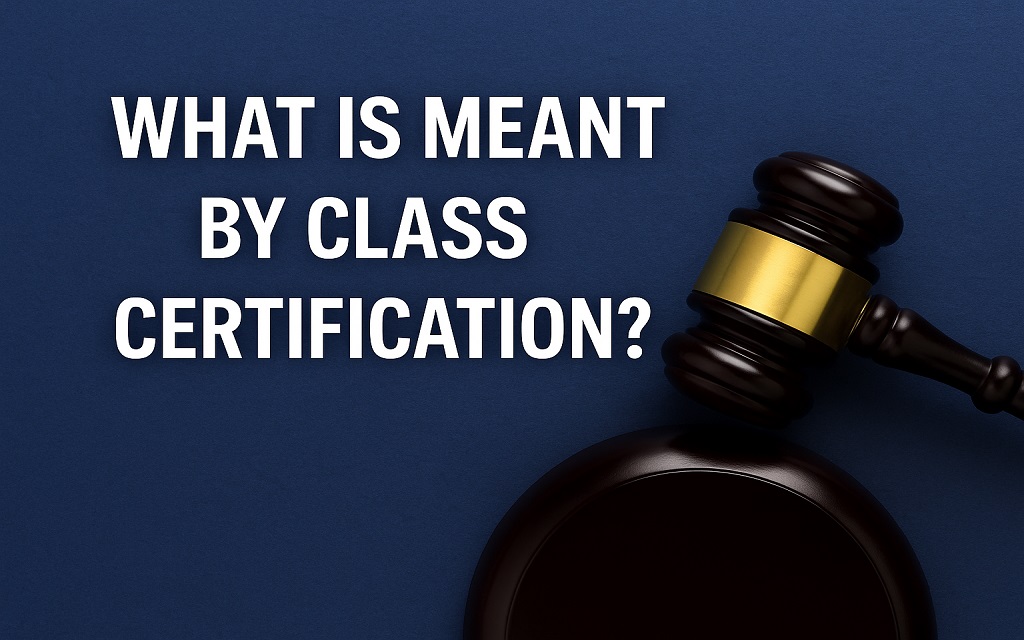
The court must certify the case for it to move forward as a class action. This implies:
- The class must be numerous enough to warrant group treatment
- Legal claims must be similar across members
- The lead plaintiff (Gomes) must be typical of the group
- Lawyers must fairly and adequately represent the class
If certified, the class could include millions of Mielle customers, especially since the oil was widely available online and in national retailers.
What Laws Did Mielle and P&G Allegedly Break?
The lawsuit rests on multiple legal claims. It alleges both state-level violations and general legal misconduct.
Core Claims
- ICFA stands for the Illinois Consumer Fraud and Deceptive Business Practices Act
–This statute serves as the foundation for the state-level fraud allegation because the case was brought in Illinois. - Violation of Multi-State Consumer Protection Laws
– The complaint invokes similar laws from the ten-state subclass, allowing broader consumer protection arguments. - Common Law Fraud
– The plaintiff alleges that Mielle knowingly or recklessly withheld information about the risks of hair loss. - Unjust Enrichment
– This claim says Mielle and P&G profited unfairly by selling the product under false or misleading pretenses. - Injunctive Relief
– The lawsuit requests that the court order Mielle/P&G to stop making deceptive sales in the future, alter labeling, and explain hazards.
Relief Requested
- Refunds in whole or in part to impacted customers
- Monetary compensation for injuries sustained (distress, hair loss, and medical expenses)
- Directives to alter marketing and packaging
- The defendants cover legal fees and court costs
Each of these claims aligns with what courts often see in class actions involving cosmetic safety or labeling deception.
What Evidence and Testing Issues Matter?
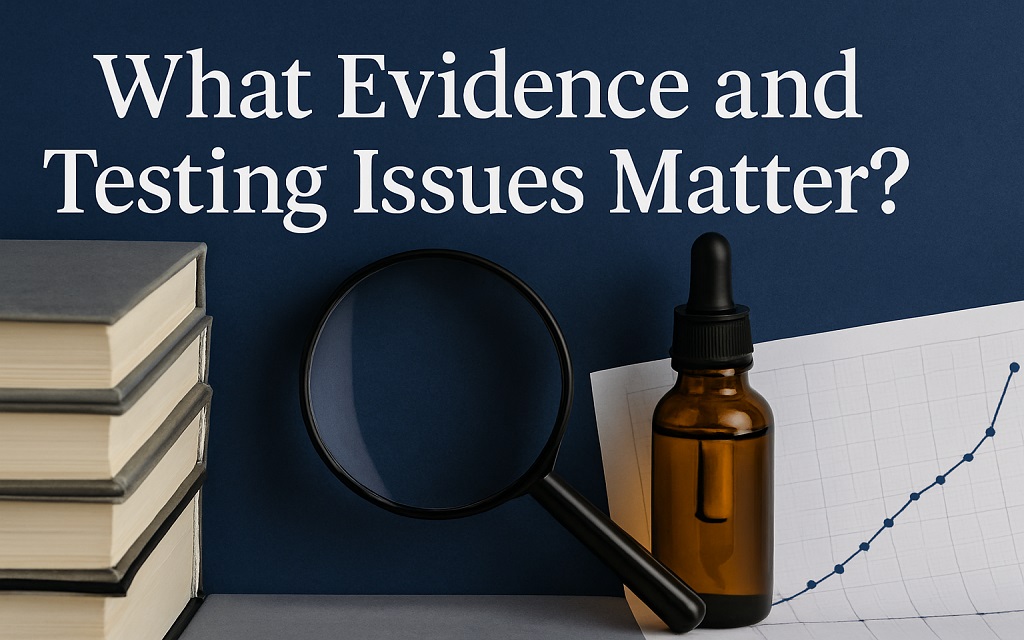
The lawsuit against Mielle and P&G raises serious questions about product safety testing. The case alleges that before introducing or advertising the hair oil, the businesses did not carry out sufficient pre-market testing or clinical studies.
Is There Something Missing?
- There are no dermatological or clinical trials demonstrating the product’s safety.
- Lack of long-term testing to assess the risk of allergic responses, scalp irritation, or hair loss
- No published safety assessments show the oil is safe for all hair types
The plaintiff says Mielle promoted the oil as beneficial while ignoring reports of harm. The corporations are accused in the complaint of failing to conduct risk analysis, which is particularly crucial when marketing to consumers who have chemically treated or natural hair.
Although cosmetics are not subject to pre-approval like medications, if this is the case, it may contradict FDA guidance on truthful labeling.
What Proof Could the Court Take Into Account?
- Internal documents from P&G or Mielle showing product formulation history
- Any consumer complaints before 2024
- Social media feedback or negative reviews are removed or ignored
- If the components are known to irritate the scalp or induce contact dermatitis
- Dermatological studies on peppermint and rosemary essential oils
Evidence also matters for proving consumer reliance. The court may ask:
Did buyers rely on the “strengthening” and “safe for daily use” claims when purchasing?
If enough class members answer yes, the liability case strengthens.
Does the Complaint Claim the Oil Itself Is Defective?
This is a key distinction. The complaint does not call the product defective in a traditional legal sense. Instead, the plaintiff focuses on:
- Lack of disclosure
- Inadequate testing
- Marketing language that overstates benefits
Unlike product liability claims, this lawsuit does not allege contamination or faulty manufacturing. Instead, the argument is that the risk of hair loss, although not universal, is severe enough to have been disclosed.
This approach follows a broader trend in personal care lawsuits:
- Consumers challenge marketing language
- They target omissions of material risk
- They demand that companies test beyond minimal FDA compliance
The legal question becomes: Would a reasonable consumer have made a different decision if the label had warned of potential hair thinning?
What Could the Class Receive If They Win?

Consumers may be eligible for a variety of payments if the plaintiffs win and the court certifies the class.
1. Refunds
- Affected buyers may get a partial or full refund of the product price
- No proof of harm may be required in basic tiers of compensation
- Receipts or proof of purchase may be needed for higher refund tiers
2. Damages
Consumers who suffered severe hair loss or incurred costs (e.g., dermatology visits, scalp treatments, wigs) could qualify for additional payouts.
The court may award:
- Medical expenses
- Pain and suffering
- Out-of-pocket costs for product disposal or replacement
3. Injunctive Relief
Courts can also require companies to:
- Add warning labels or revise ingredient disclosures
- Stop marketing products as “safe” or “strengthening” without proof
- Improve testing protocols and make the results public
- Launch a formal recall or replacement program
4. Attorney’s Fees
As in most consumer fraud class actions, the complaint requests that the defendants cover the plaintiffs’ legal costs.
What Happens Next in the Mielle Lawsuit?
The class action process unfolds in phases. At this point, the case is in early litigation. Here’s what comes next:
1. Motion to Dismiss (Expected Soon)
P&G or Mielle will likely file a motion to dismiss. They may argue:
- The complaint lacks specific facts
- There’s no proven causation between the oil and hair loss
- The product is not defective under applicable laws
- No widespread damage occurred
If the court denies dismissal, the case moves to discovery.
2. Class Certification
To proceed as a class action, the court must certify the class. This is often a turning point. Plaintiffs will submit:
- Consumer declarations
- Surveys
- Purchase data
- Expert opinions on marketing and product effects
The defense will try to show that:
- Individual facts vary too much
- There is no shared harm
- The case is better handled through individual suits
3. Discovery
If the class is certified, the parties exchange evidence:
- Internal documents
- Marketing materials
- Emails about testing (or lack thereof)
- Customer complaint records
Discovery can last several months to over a year.
4. Settlement or Trial
Most class actions settle. If this case settles:
- Eligible consumers may file claims online
- Payments will vary based on the proof submitted
- Notice may be mailed or posted on class action websites
The resolution of the issue might take two to four years if it gets to trial.
How Does This Affect Customers?
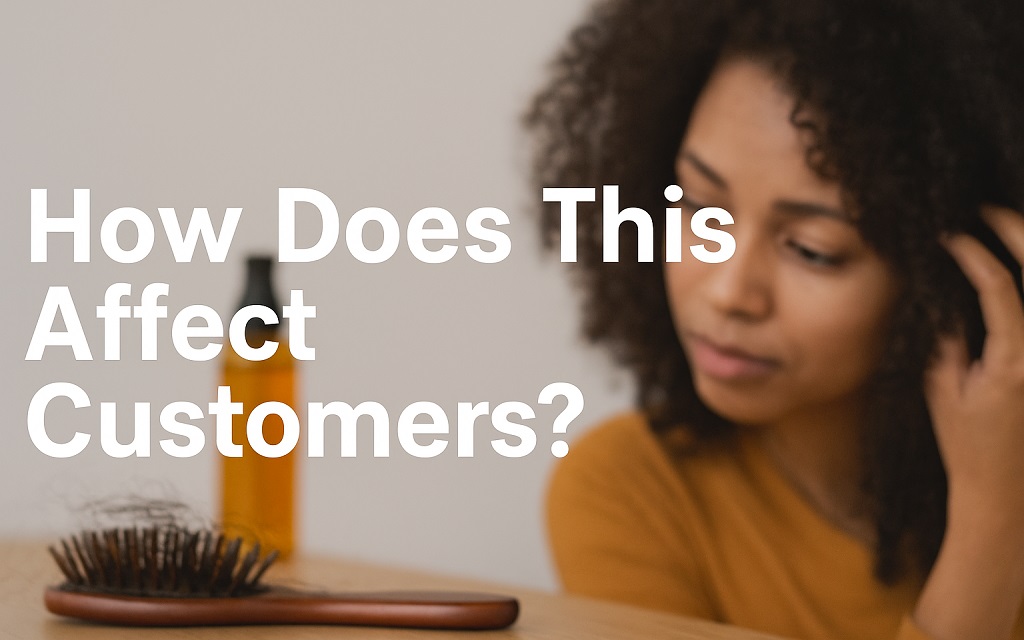
Consumers who bought the Mielle Rosemary Mint oil may be affected—even if they haven’t experienced hair loss.
Key Points
- Anyone in the U.S. who purchased the oil may be part of the class
- Customers in the following states may be eligible for improved protection: CA, IL, FL, MA, NJ, NY, and others.
- If the lawsuit is settled or the plaintiffs prevail, reimbursement may be possible.
- Customers should preserve the product’s packaging, receipts, and images.
- Medical documentation helps support a higher claim if harm occurred
What You Should Do Now
- Save proof of purchase: email receipts, store records, loyalty program history.
- Take dated photos of any reaction or scalp change
- Consult a dermatologist if you experience issues
- Watch official court updates for filing instructions (if certified)
Are the Mielle Rosemary Mint Oil Products Still Available?
Yes. Mielle Organics Rosemary Mint Scalp & Hair Strengthening Oil is still accessible. The following well-known national retailers sell the product:
- Target
- Walmart
- CVS Pharmacy
- Amazon
- Beauty supply chains and independent stores
Mielle’s website also lists the product as in stock, with no warnings or legal notices added. As part of its Rosemary Mint line, the business is still marketing it, emphasizing its “strengthening formula” and “invigorating scalp care.”
Any Recalls or Warnings?
- No recall has been issued by the FDA or the company
- The product label remains unchanged
- No public safety alert has been published as of the lawsuit filing
The continued availability suggests that Mielle and P&G do not acknowledge any defect or risk at this stage. However, the plaintiff argues that by continuing to sell the oil without new testing or warnings, the companies may be compounding the issue.
What Part Does P&G Play in the Lawsuit?
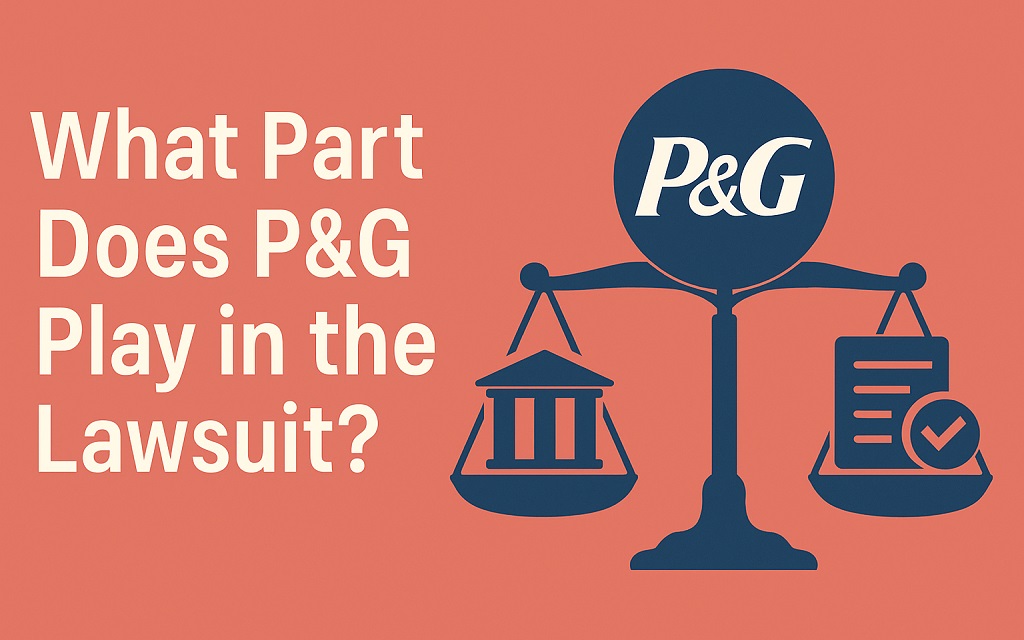
Procter & Gamble (P&G) purchased Mielle Organics in 2023. The move, which was presented as a means for P&G to enter the textured hair care market, received extensive coverage in the beauty industry.
Production of the Rosemary Mint product was neither halted nor changed by P&G’s takeover. According to the lawsuit:
- P&G “continued manufacturing, marketing, and distributing” the oil
- The product packaging still includes Mielle branding, but P&G now handles broader logistics
- P&G allegedly failed to perform independent testing or update safety disclosures post-acquisition
Why This Matters
The inclusion of P&G in the lawsuit is strategic. P&G has:
- Greater financial resources
- Broad regulatory and product liability experience
- A global platform that might expand the reach—and risk—of this lawsuit
The damages or consumer reimbursement fund may rise dramatically if P&G is held accountable or consents to a settlement.
Is This Part of a Bigger Trend in Cosmetic Lawsuits?
Yes. The Mielle lawsuit fits a growing pattern in personal care litigation. Across the industry, consumers are pushing back against:
- Deceptive marketing
- “Clean beauty” claims without proof
- Omissions of risk for products targeting vulnerable populations
Recent examples include:
- Hair relaxer lawsuits alleging links to cancer and hormonal disruption
- Dry shampoo recalls over benzene contamination
- Skin care suits alleging allergic reactions or chemical burns
In all these cases, the lawsuits focus less on contamination or defects—and more on failure to warn and overstated safety promises.
Mielle’s lawsuit is notable because:
- The product is intended for users with natural or textured hair.
The company’s reputation was established through community-based, inclusive, and safe messaging. - Allegations suggest that the corporate acquisition did not lead to increased scrutiny.
What Are the Core Allegations Again?
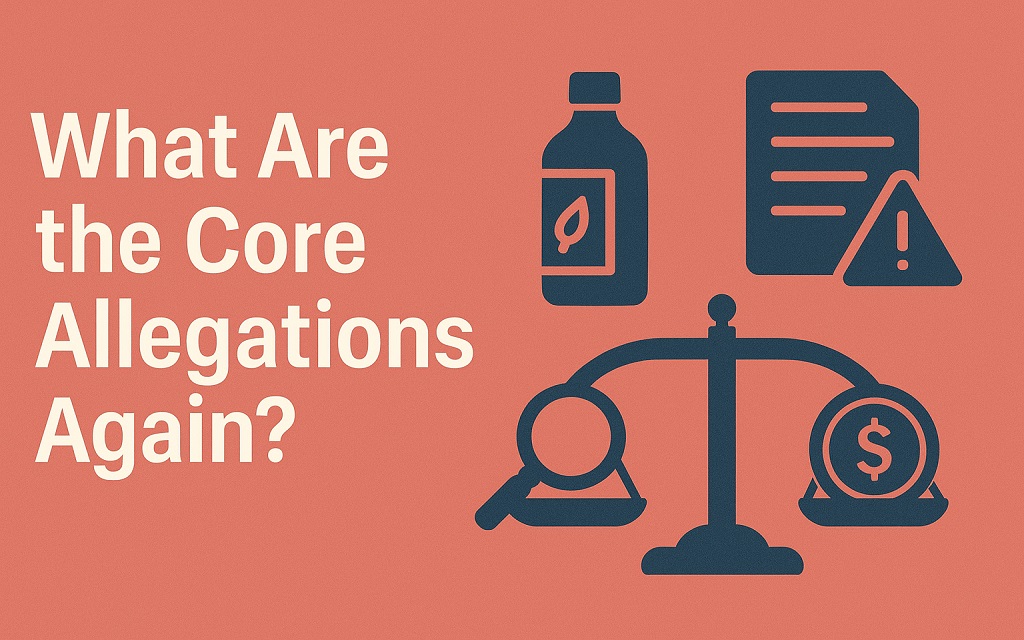
To summarize, the lawsuit centers on these key points:
- Omission of Risk
– The oil was marketed as strengthening and safe, but allegedly caused hair loss in some users. - Lack of Testing
– The complaint says the product was sold without adequate safety validation or dermatological review. - Misleading Claims
– Terms like “nourish,” “strengthen,” and “non-toxic” appear on the label but are not supported by testing. - Inadequate Warnings
– The product includes no notice that hair thinning or irritation could occur, even in sensitive users. - Unjust Enrichment
–Customers paid more for a product that was advertised as safe, restorative, and clean.
The court will assess whether these allegations are evidence-based, compliant with the law, and deserving of class-wide treatment.
Mielle Lawsuit Case Progress & Timeline (Updated October 2025)
| Date | Event / Development | Details |
|---|---|---|
| Jan 2023 | Consumer Complaints | Reports of hair loss and scalp irritation after using Mielle Rosemary Mint Oil. |
| Feb 2023 | Public Backlash | Viral TikTok and Reddit posts trigger nationwide concern; Mielle defends product safety. |
| Apr 2023 | Class Action Filed | Lawsuit filed in Illinois alleging misleading marketing and product defects. |
| Jun 2023 | P&G Added | Procter & Gamble named the co-defendant after acquiring Mielle Organics. |
| Aug 2023 | Motion to Dismiss | Defense challenges claims, citing lack of evidence. |
| Oct 2023 | Motion Denied in Part | Court allows deceptive marketing claims to proceed. |
| Jan 2024 | Discovery Begins | Both sides exchange evidence and expert analyses. |
| May 2024 | Expert Witnesses Named | Dermatologists and toxicologists join the plaintiff’s side. |
| Sep 2024 | Settlement Talks | Negotiations start, but no resolution is reached. |
| Feb 2025 | Class Certification Filed | Plaintiffs request nationwide class action status. |
| Jun 2025 | Defense Response | Defense disputes certification and scientific basis. |
| Oct 2025 | Pending Court Ruling | The court is reviewing the certification motion; a decision is expected soon. |
How Do You Proceed If You Purchased the Product?
If you purchased Mielle Rosemary Mint oil, you don’t need to panic—but you may want to take a few steps to protect your rights if the lawsuit advances.
Keep Records
- Save receipts (digital or printed)
- Take photos of the bottle, especially the lot number and expiration date
- Record the store or website where you bought it
Document Symptoms
If you experienced:
- Hair thinning
- Bald patches
- Itchy or inflamed scalp
- Increased shedding
Then take clear, dated photos and consult a medical professional if needed. Get a copy of any diagnosis or treatment plan.
Report to the FDA
You can submit your experience to the FDA’s CFSAN Adverse Event Reporting System (CAERS). While voluntary, it helps create a safety database for cosmetic products.
Visit: FDA CAERS
Watch the Court Case
If the court certifies the class, a public notice will be issued. That’s when you’ll learn:
- Whether you’re eligible
- How to file a claim
- What kind of proof (if any) is required
- What compensation might be offered
You can also check classaction.org or topclassactions.com for updates on the case.
Will Mielle or P&G Have to Change the Label?
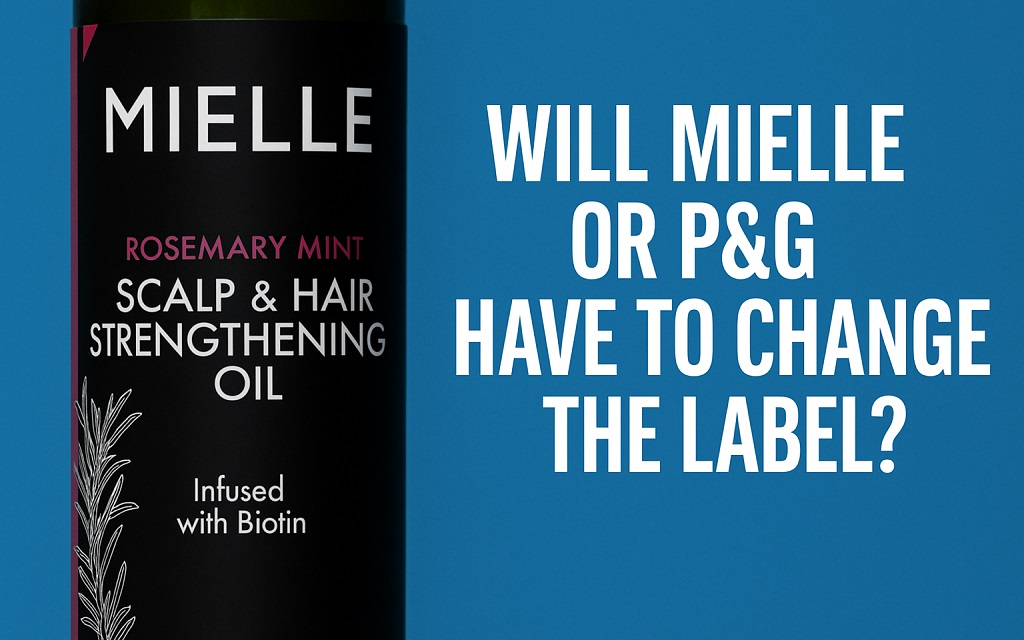
That depends on the outcome. If the court finds that Mielle’s claims were misleading or that the label failed to warn, it can order label modifications or product notices.
This might include:
- New warnings about potential side effects
- Reformulated language around strength, growth, and nourishment
- Additional testing data or dermatologist approval has been added to the packaging
Courts rarely demand the complete removal of a product unless there’s clear evidence of widespread harm. But in many similar cases, companies have settled by:
- Offering refunds
- Updating marketing materials
- Avoiding specific terms unless backed by data
FAQs
Is there a settlement on the Mielle lawsuits?
As of Oct 31, 2025, there is no court-approved settlement publicly recorded in the federal dockets cited here. One Illinois case (Williams) was dismissed without prejudice with leave to amend; the California case (Allen) remains pending.
Did a court find Mielle’s Rosemary Mint Oil “unsafe”?
No. Allegations are not findings. The Illinois case has not resulted in findings on product safety; it was dismissed without prejudice on pleading grounds.
What happened to the first Illinois case (Gomes)?
The plaintiff filed a voluntary dismissal on Dec 10–11, 2024; the court terminated the case.
What does the California case allege?
It challenges “natural” and “Made in USA” representations and ingredient-origin disclosures; merits unresolved as of March 2025 docket.
Is there a problem with Mielle hair products?
Some users allege that Mielle’s Rosemary Mint line caused hair loss, breakage, and scalp irritation, though the brand disputes the claims.
Why is my hair falling out after using Mielle?
It might be due to ingredient sensitivity, formula changes, or lack of adequate warnings — users report similar effects following use of the Rosemary Mint oil.
What is the controversy with the owner of Mielle?
Founder Monique Rodriguez has publicly accused influencers of being paid to spread false claims about the brand’s hair loss controversy.
What hair product is being sued for hair loss?
The Mielle Rosemary Mint Scalp & Hair Strengthening Oil is the product named in the class action lawsuit over alleged hair loss.
Should I stop using the product?
Lawsuits contain allegations, not medical findings. If you’re experiencing hair shedding, irritation, or scalp pain, stop use and consult a board-certified dermatologist. Save the product and receipt in case of a recall or claims process in the future.
Conclusion: Why This Lawsuit Matters
The Mielle lawsuit is about more than one product. It reflects a broader shift in consumer expectations:
- Buyers want transparency
- Labels must match real-world outcomes
- Safety must be proven, not presumed
In beauty and personal care, especially for products used daily, the stakes are high. When companies market oils, creams, or sprays as “safe” and “nourishing,” they must back those words with science.
Whether this case results in a win for the plaintiffs or a quiet settlement, it raises significant questions about:
- Cosmetic marketing ethics
- Product testing standards
- Corporate responsibility after acquisition
And most importantly, who bears the risk when products cause harm?
Disclaimer: This article provides a general overview of the Mielle lawsuit, based on publicly available information, and is intended for informational purposes only. It does not provide legal advice. You must consult a licensed attorney for any legal decisions.

